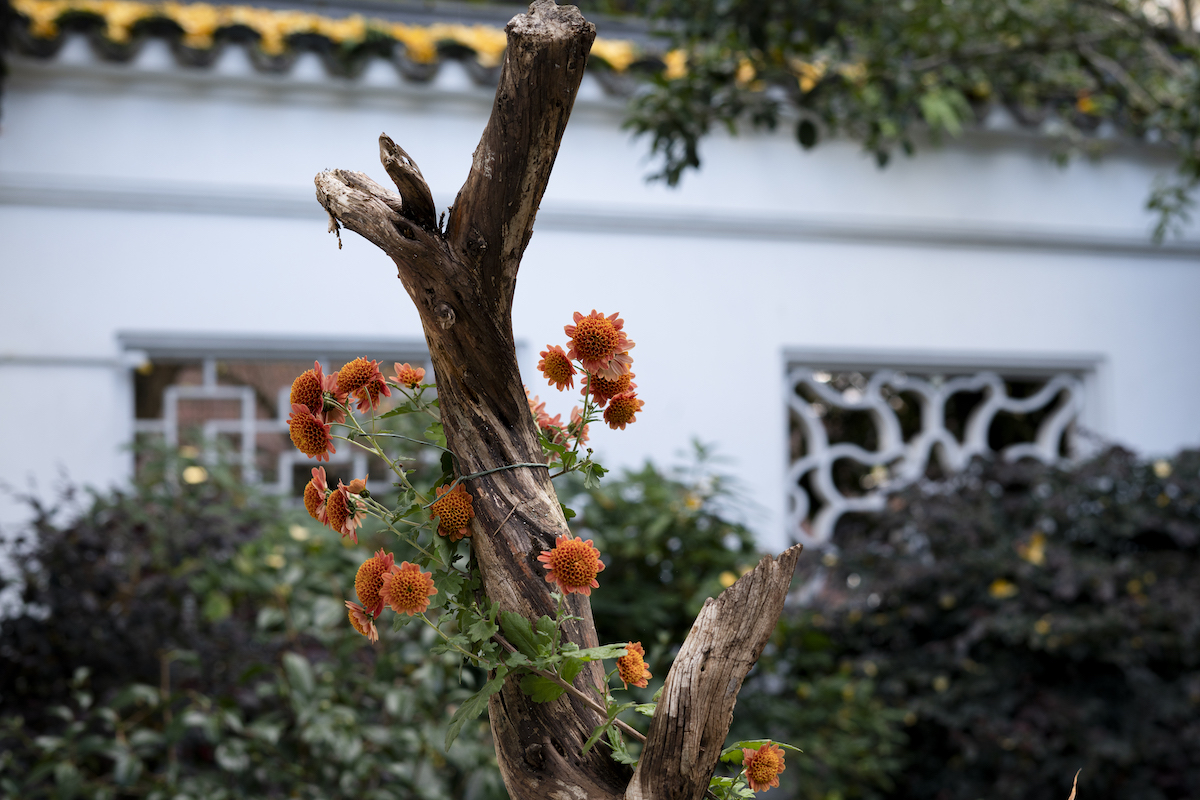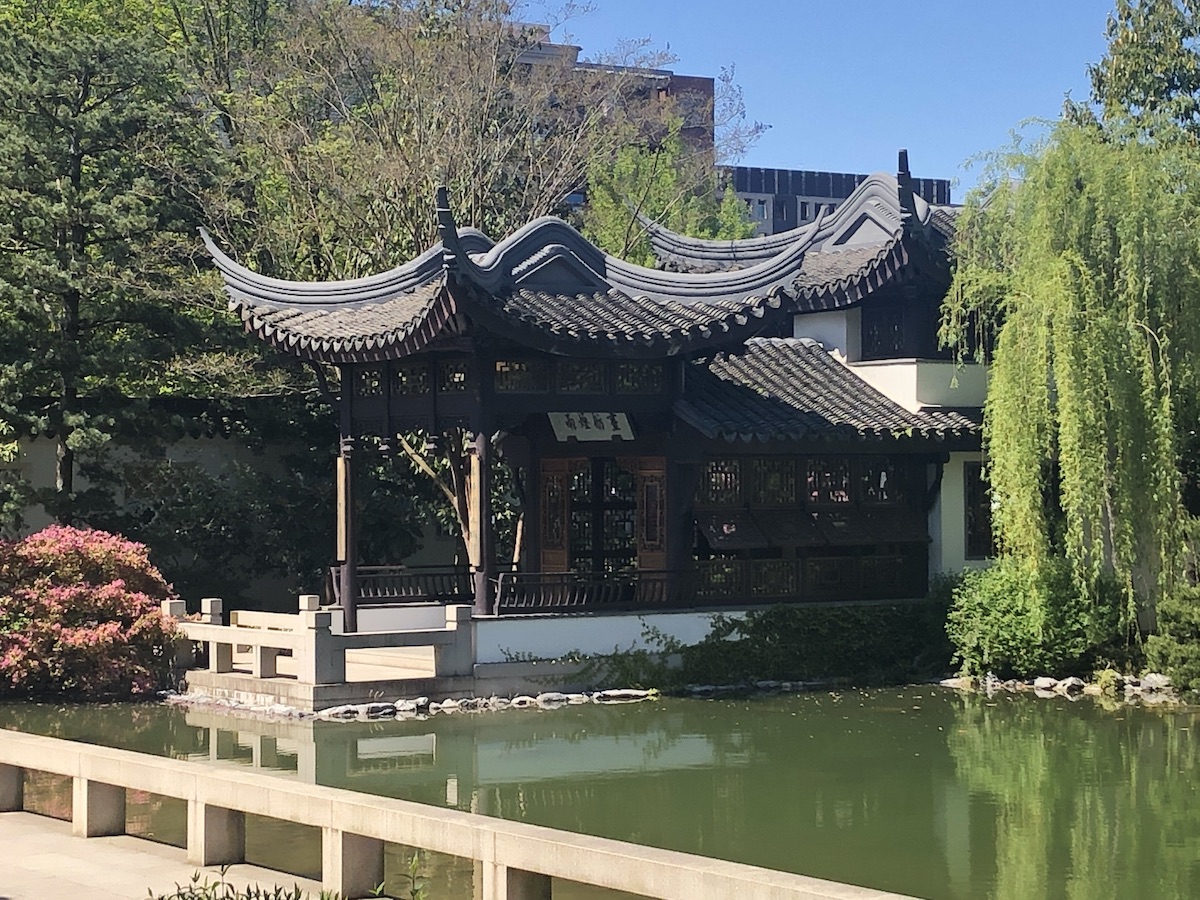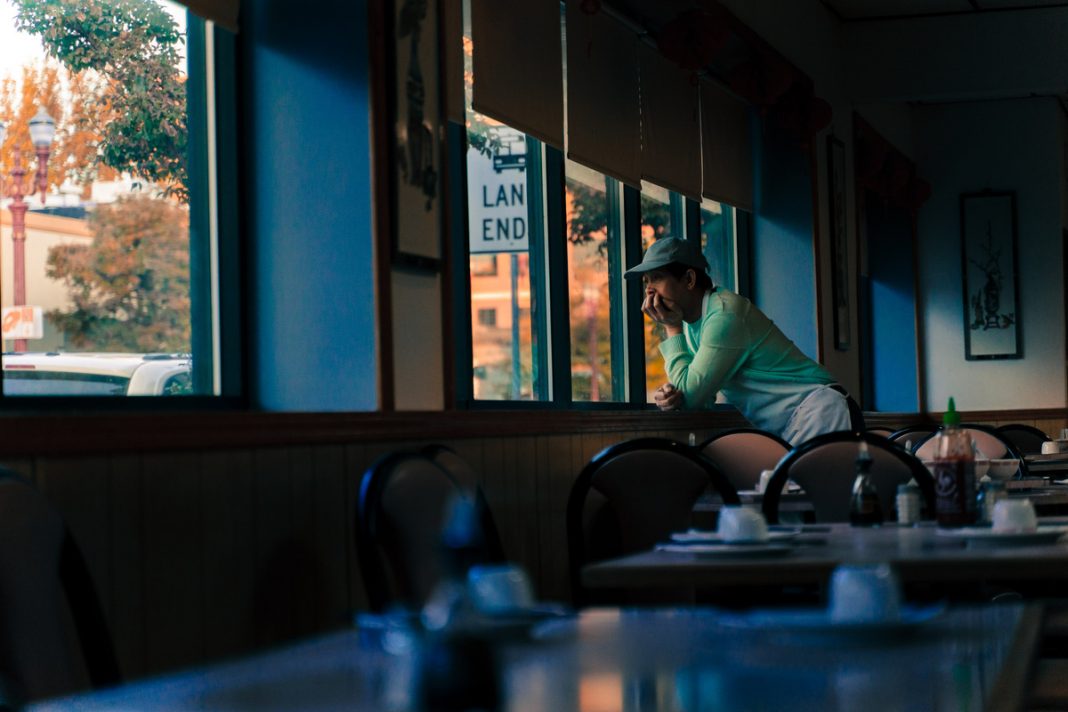After the financial impact of COVID-19 closed the Lan Su Chinese Garden’s greenhouse and laid off most of its horticulture staff, Justin Blackwell’s first reaction was panic.
“My first thought was, ‘Oh my god, we’re not going to have any lotus, and we’re not going to have any Chrysanthemums,’” said Blackwell, the Portland Garden’s horticulture curator.
For the Garden, the annual chrysanthemum displays are a key part of the garden’s ensemble of culturally significant plants, and their absence would have been a catastrophic loss of one of the keystone winter displays. Still, despite overwhelming challenges, Blackwell’s worst fears didn’t come to pass.
“The chrysanthemums, as you can see, have survived,” said Blackwell, gesturing to a vividly colorful display of flowers, neatly perched on one of the garden’s many stone walls. “It was one of those moments of managing your expectations.”
With reduced resources and a skeleton crew of staff, Blackwell and his colleagues took a “less is more” approach, scaling down the number of chrysanthemums on display and perfecting each arrangement’s artistic quality.
“It was like, how do we make this a positive?” Blackwell said. “Let’s make more of an impact with how we do it, and what we do.”
Venus Sun, communications and education director, argued that, in some ways, this focus on quality over quantity created a more authentic experience of Chinese horticulture.
“Most people…want as many [flowers] as possible, as colorful as possible,” Sun explained. In the traditional Ming-era, scholar’s-garden style Lan Su emulates, though, this simply isn’t the case.
“A scholar’s aesthetic is very different from your cliche way of thinking about Chinese culture,” Sun said. “You think about Chinese New Year, you think about a lot of reds, a lot of golds, a lot of festival lights.”
In scholar’s gardens, which were originally built for highly-trained intellectuals, things are a little different.
“These were [built for] people who studied at the very least for two decades,” Sun said. “They’re not looking at things as the loudest way, the most colorful way. They’re looking at ‘how can we say very little, but mean a lot?’ Everything we do here is to try to live with that aesthetic.”
The Ming-style garden’s underspoken, minimalist style is almost perfectly embodied in the garden’s chrysanthemum “penjing” displays. The living arrangements feature potted chrysanthemums that have been deliberately cultivated and arranged around other items, such as decorative stones, driftwood and other plants.
According to Sun, the name penjing owes its etymology to another Chinese word, penzing, which literally means scenery in a pot. True to the origin of its name, each piece does, in fact, resemble its own landscape—in some pots, chrysanthemums twine around pieces of limestone that resemble mountains, in others, the plants wrap themselves around weathered driftwood. In each case, incredible amounts of time and intention are placed into every piece, with every detail meticulously balanced against the rest of the composition.
Even the source of the driftwood used in many of the pieces has been thought through. According to Blackwell, the wood was sourced from rivers instead of coastal waters, because the salt from ocean driftwood would kill or stunt the plants around it. Other details, such as the orientation of the plant in relation to the calligraphed poetry in front of the pots, are also carefully considered.
The final result is a work of art in its own right, one that stresses a synergy between all of the elements that represent it.
“The container, the driftwood and the plant all have to find this balance,” Blackwell said. “When you look at it, it’s supposed to make you think.”
In late fall and early winter, when chrysanthemums are at the peak of their bloom, the penjing displays can be found strategically placed throughout the garden. Besides their beauty, part of the reason for the chrysanthemum’s prevalence throughout the Lan Su gardens is their significant importance in Chinese culture.
The first notable written record of chrysanthemums in Chinese texts appears in the writings of Confucius, when he praised the plants in a manuscript written about 2200 years ago. Chrysanthemums are one of the four so-called gentlemen flowers in Chinese culture, a category of especially esteemed plants that also includes lotuses, bamboo and orchids.
“Being one of the four kind of says a lot about how significant it is as a cultural symbol,” Sun said. “The concept of penjing that [Blackwell] brought in and introduced to our audience, is a very Chinese concept. Most people know about bonsai; they may or may not know about penjing.”
Lan Su’s choice to display and promote overlooked art forms such as penjing is an extension of one of its organizational goals to broaden the cultural horizons of its visitors.
“What we want to do as a non-profit is create a common ground on promoting authentic Chinese culture,” Sun said.
“We want to strive to offer something authentic, from a Chinese point of view—because then it’s giving Americans a real education,” Blackwell added.
Besides being a beautiful addition to the garden, the chrysanthemum displays that bloom at Lan Su every October and November represent a part of the garden’s mission to expand cultural awareness, and this is part of the reason Blackwell and his colleagues worked so hard to have them this year, despite the devastating impacts of the pandemic.
If you missed the flowers when they were blooming this season, don’t worry—expect to see them again, in late Oct. 2022.





